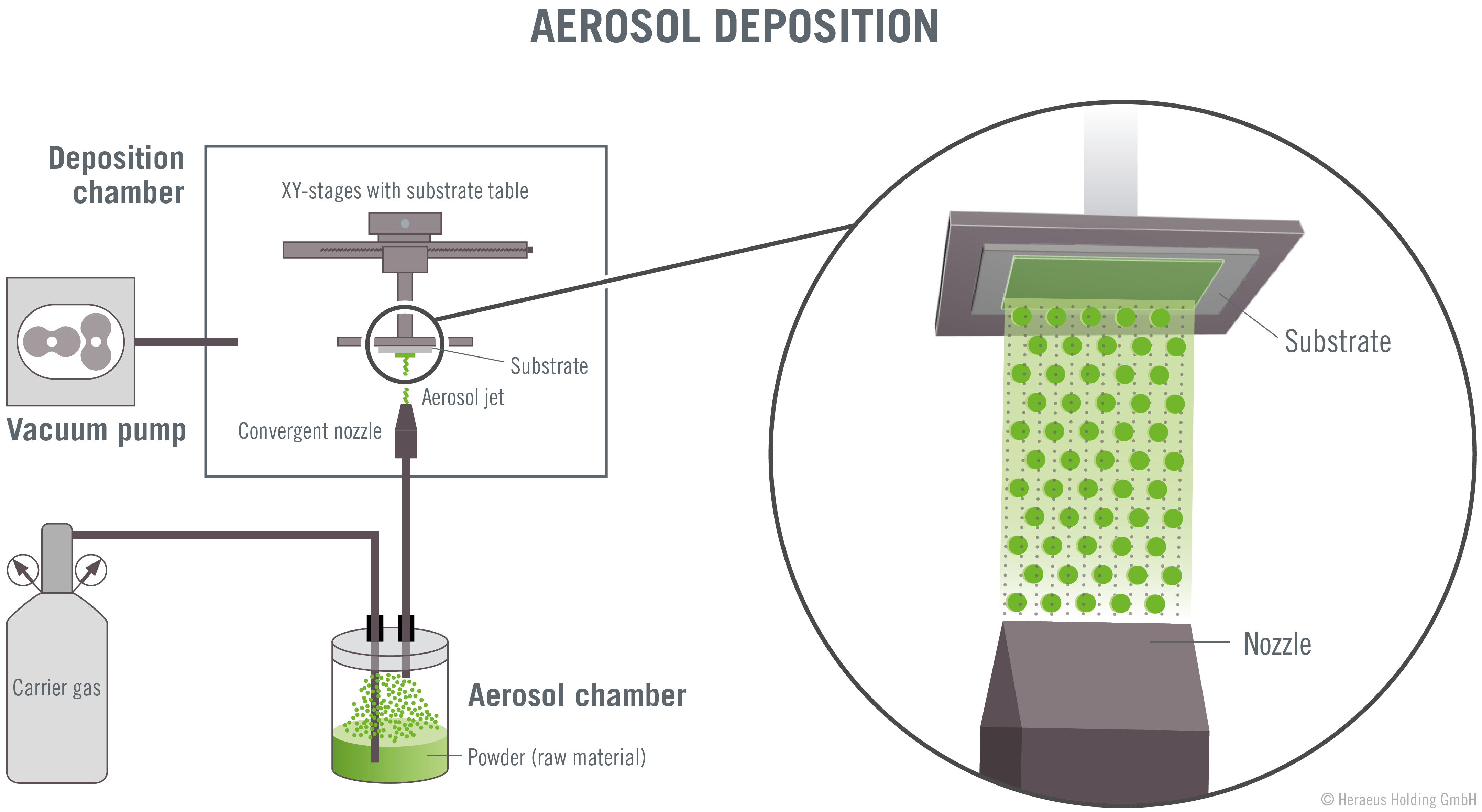EOS Biomaterials Incorporated relies on Heraeus R&D equipment to develop coatings for the medical market. The company’s technology can be used for surgical implants and wound treatment. Their patented coatings include antiseptic and antibiotic effects and enable a slow-release of antibiotics. The powder formulations can be applied with the aerosol deposition method. "With our own aerosol deposition machine, we will be able to test and optimize new materials and material combinations in even shorter cycles in the future," says Mr. Lee, Chairman of EOS Biomaterials Incorporated.
There are numerous fields of application for antiseptic coatings in medical technology. For example, they can be applied on implants or medical instruments. They are usually made from an active metallic component - for example silver - and a carrier material such as ceramic. The larger the active surface, the higher the antiseptic effect. However, the right material ratio of active component and carrier material not only determines whether the coatings achieve the desired antiseptic effect. The raw material metal is also a cost driver. That's why manufacturers strive to identify the best mixing ratio. "We already draw on Heraeus' materials expertise as part of a development contract. Our medical coatings experts receive powder development support with testing, analysis and consulting," so Mr. Lee.
The equipment is built in Germany and shipped to EOS Biomaterials in New Taipei City. It allows coating of areas up to 300x50mm2 and axially symmetric items. "The robustness of equipment and process makes aerosol deposition the ideal match for EOS Biomaterials´ development goals," says Ilka Luck, Head of Heraeus High Performance Coatings. “They are working on very innovative products, and we are very happy to support them in this effort."




